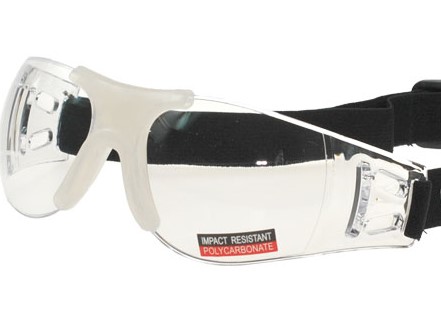Risk for eye injury is high in all sports whether contact or non-contact. The way to combat this inherent risk is by using protective eyewear. Players, parents and coaches realize that wearing eye protection makes it safer for the participants and with corrective protective eyewear, may actually improve performance.
One concern that athletes could have is their appearance when they are wearing eye protection. Kids especially might not like having to wear goggles while they play their sport. Luckily the status quo is changing and it is becoming more of a norm to have protective eyewear.
The pros and cons to protective eyewear are clear. The pros of wearing protective wear are that there is a reduced risk of injury. This reduced risk means that you may not have to pay any medical bills to repair the damage that could have happened had protective eyewear not been used. The cons are more cosmetic in that you may not like the way the protective eyewear looks. Also, it might not be the most comfortable. However, this should be balanced with the fact that it might not be comfortable to have a black eye from getting hit in the eye with a ball or flying object.
Here are some statistics about eye injuries. Prevent Blindness America has reported that sports cause about 40,000 eye injuries yearly. This includes non-contact sports like tennis, racquetball or badminton which consist of fast-moving objects presenting clear dangers to the eye.
When looking for protective eyewear, there are certain features that you should be aware of. Sport protective eyewear requires stronger protection than everyday glasses can provide. Each sport itself may require a different kind of goggle. Be sure you obtain protective eyewear specific to your sport if they are available.
Sport goggle lenses are usually made from polycarbonate plastic. This provides for a defense that is impact-resistant which withstands much more than a glass lens. The frames for these glasses are sport specific as well.
It is important that you consult with an eye doctor before purchasing any protective eyewear to ensure you obtain the best protection. Safety comes first.


